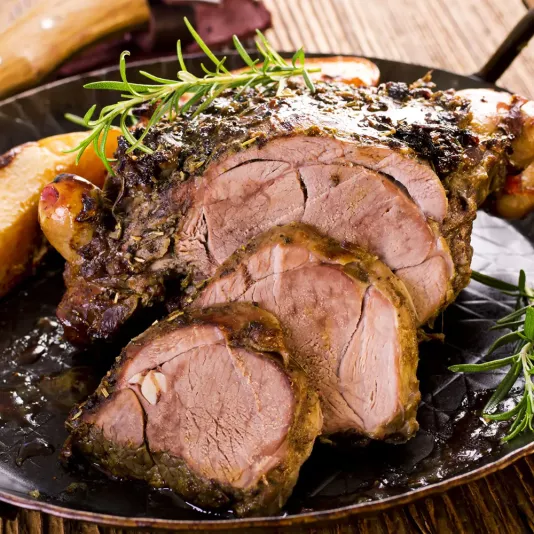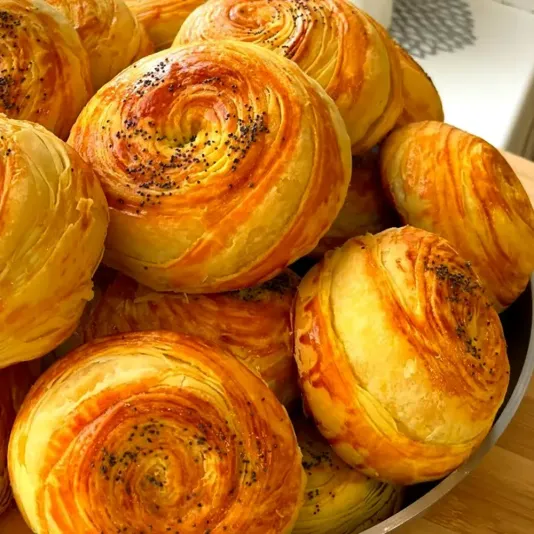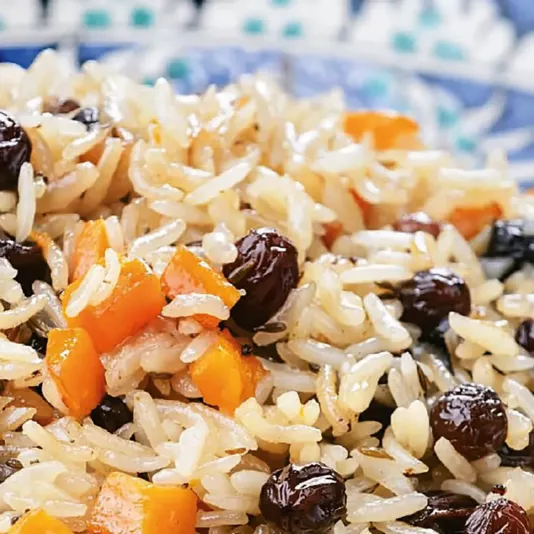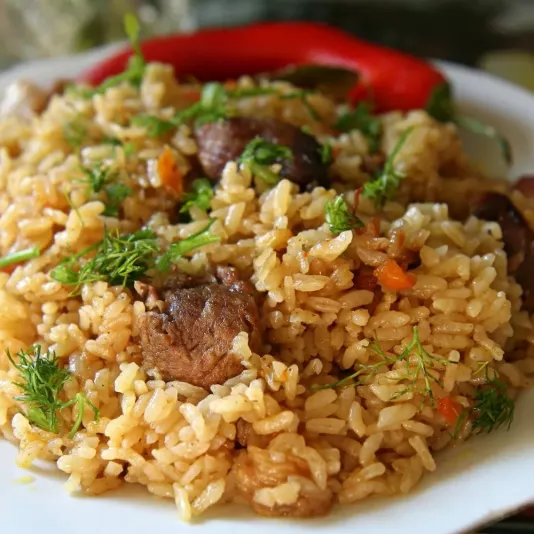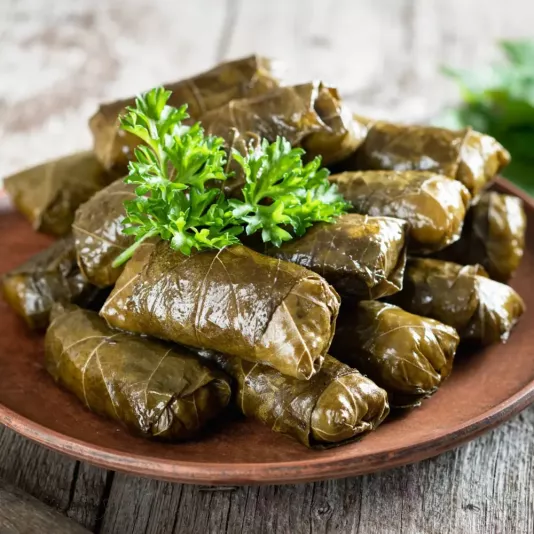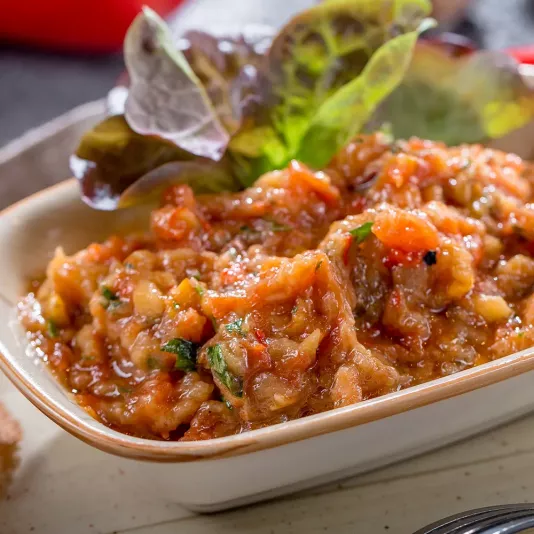Azerbaijani Cuisine
Azerbaijani Cuisine is a refined balance between the spiciness of seasonings and the natural tenderness of ingredients. Aromatic herbs, dried fruits, rice, and lamb are highly valued here, used to create both everyday dishes and festive treats. Over the years of cooking, I’ve learned that the main secret of this cuisine lies in the precise rhythm: the meat must rest after grilling, and the pilaf must infuse under a cloth so that the steam opens each grain. Azerbaijanis believe that food is not only about taste but also about togetherness, which is why the table is always generous and diverse. For me, this cuisine is a symbol of warmth, where the combination of sweet and salty feels natural, and the scent of basil or tarragon reminds one of a sunny day. When I cook, I always feel how ancient traditions come alive in a modern rhythm. Even in the city, amidst the hustle, it’s worth finding time for slow cooking – that’s when the dish fully unfolds, acquiring the deep flavor that leaves a lasting memory.
Recipes of Azerbaijani Cuisine
Each recipe of Azerbaijani cuisine preserves a part of the culture and character of its people. The dishes vary depending on the region, but respect for ingredients and attention to detail remain constant. I’ve been convinced many times that the quality of rice for pilaf or the freshness of lamb influences the result no less than the chef’s skill. This cuisine is distinguished by a deep understanding of flavor: spices do not dominate but only highlight the main notes. That’s why the aroma of cilantro or sumac is not lost but works in harmony. In my practice, it’s important to watch the temperature: too strong a flame will make the meat tough, while too weak won’t give it the desired crust. Traditional soups like piti or dovga require patience – they reveal their aroma only after long infusion. And festive pilaf is always served last – as a symbol of completion and fullness of the meal. Another nuance is presentation: the dish should be not only delicious but also visually appealing, because in Azerbaijan, food is part of hospitality, where every detail matters for the warmth and joy of guests.
History and Traditions of Azerbaijani Cuisine
Azerbaijani cuisine has been shaped over centuries, absorbing the influences of neighbors while preserving its own soul. Most recipes originate from rural families, where ingredients came from what was grown or available. Over years of cooking, I’ve realized: it is simplicity and sincerity that make this cuisine unique. Once, bread was baked in clay ovens, and pilaf was prepared over an open fire – this method has survived to this day because it gives a special texture. Traditionally, the hostess didn’t just cook but put care into every dish: cutting the meat correctly, choosing spices, knowing when to add salt. In big cities, recipes have become more refined, but the essence remains: naturalness and harmony. I remember how in Baku families still honor the ritual of shared meals, where the main thing is not the number of dishes but their spirit – homely, sincere, and unifying. Today, young chefs add modern notes but with respect for the foundation – this allows preserving authenticity while giving new life to old recipes.
Main Ingredients of Azerbaijani Cuisine
The key ingredients of Azerbaijani cuisine are rice, lamb, eggplants, tomatoes, herbs, and spices. Over the years of cooking, I’ve learned to understand how each ingredient affects the taste. The rice must be long-grain and well-washed; otherwise, the pilaf will lose its fluffiness. Lamb should be young, fresh, and not overly fatty because it forms the base aroma. Vegetables should be ripe but not overripe – that way they hold their shape in stews or on the grill. Spices such as sumac, barberry, and cumin are added carefully so as not to overpower the taste of the meat. I often recommend using tail fat for frying: it gives a deep aroma but must be used in moderation. The butter should be clarified since even a small impurity can affect the texture of pilaf. Every detail – from the right knife to the sequence of mixing – shapes the unique flavor of this cuisine. Water also plays an important role – it should be soft and clean because it influences the consistency of rice and broths. Altogether, this creates the true image of the Azerbaijani table – simple yet perfect.
Traditional Dishes of Azerbaijani Cuisine
Among the most famous dishes are dolma, piti, kufte, kebab, and, of course, pilaf. Each has its nuances that I’ve learned through years of practice. Dolma requires patience: grape leaves must be young, or they will be tough. Piti is cooked in clay pots, and it’s important not to stir it during cooking to preserve its texture. Kufte are tender meatballs that must be cooked over low heat so they don’t fall apart. Pilaf is a story of its own: the rice is boiled until half-cooked, then steamed in a thick-walled pot with saffron and butter. When I first cooked it for a big celebration, I realized – the main thing is not to rush: each layer must heat evenly. Kebabs are served simply with onions and herbs, without sauces – the taste speaks for itself. These dishes reflect the character of the people: hospitality, depth, and love for life. And desserts like baklava or shekerbura show another side of the cuisine – tenderness and sophistication that complete the meal harmoniously and solemnly.
Secrets of Mastery in Azerbaijani Cuisine
In my practice, I always emphasize: a true Azerbaijani dish requires not only skill but also respect for time. For example, if the meat is not allowed to rest after roasting, it will lose its juiciness. And if the rice doesn’t finish steaming, the dish won’t have the lightness that is the mark of mastery. Spices are added not at the beginning but closer to the end to keep the aroma vivid. It’s also important to understand how steam works in the pot: a lid that’s too tight can make the pilaf sticky. I always use a wooden spoon because metal changes the temperature and affects texture. In cooking soups, it’s important not to boil them for too long – that way, the aroma of herbs is preserved. And most importantly – don’t be afraid to improvise within reason: experience tells you when the dish is “ready”. Azerbaijani cuisine teaches patience, precision, and respect for flavor – and that’s where its strength lies. And also generosity, because no dish should be served sparingly: the more warmth you put in, the tastier it becomes.
